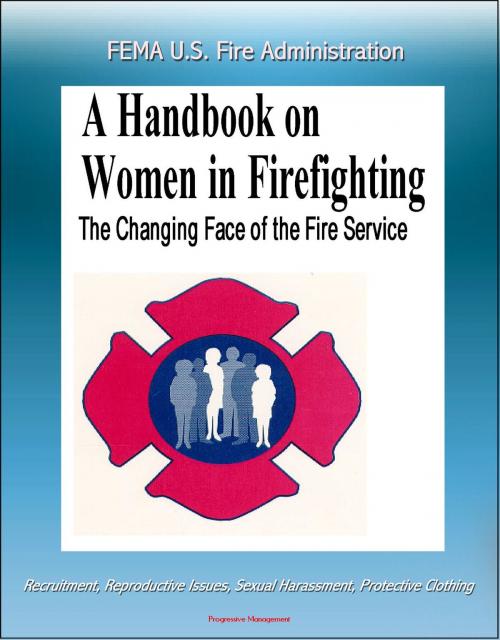FEMA U.S. Fire Administration The Changing Face of the Fire Service: A Handbook on Women in Firefighting - Recruitment, Reproductive Issues, Sexual Harassment, Protective Clothing
Nonfiction, Health & Well Being, Medical, Allied Health Services, Emergency Medical Services, Social & Cultural Studies, Social Science| Author: | Progressive Management | ISBN: | 9781476428512 |
| Publisher: | Progressive Management | Publication: | August 23, 2012 |
| Imprint: | Smashwords Edition | Language: | English |
| Author: | Progressive Management |
| ISBN: | 9781476428512 |
| Publisher: | Progressive Management |
| Publication: | August 23, 2012 |
| Imprint: | Smashwords Edition |
| Language: | English |
The purpose of this document is to help the fire service manager cope with the firefighting workforce as it changes from an all-male environment to one that includes women. The handbook offers guidance and suggestions from people who have experience and expertise in the areas that affect women's integration into fire suppression ranks. It takes a wide perspective, and, as is appropriate with personnel issues in general, offers choices and options more often than single "right" answers. The authors hope they have created a guide that, in calling on a wide range of resources, can be useful to a wide range of needs, whether that means one woman firefighter wanting to know where she can find a pair of gloves that fits, or a fire department management team seeking an overview on gender integration issues.
The Changing Face of the Fire Service attempts to answer the most frequently asked questions about women in firefighting. It focuses specifically on the issues of recruitment, entry-level physical testing, firefighter training, maternity and reproductive safety, hair-length standards, fire station facilities, sexual harassment, cultural diversity training, ongoing support, and protective gear and uniforms. Each issue is explored from both legal and practical standpoints. In the area of policy development, sample language has been included in some cases. Where it was felt that existing policies would quickly become outdated, guidelines for policy development have been substituted for specific language.
Contents: Women firefighters in the 1990s * Tradition, change and women firefighters * Recruitment * Entry-level physical testing * Firefighter training * Policy development * Reproductive issues * Child care * Firefighter marriages and anti-nepotism policies * Firefighter hair standards * Station facilities * Sexual harassment * Cultural diversity training * Ongoing support * Protective clothing fit and safety
The purpose of this document is to help the fire service manager cope with the firefighting workforce as it changes from an all-male environment to one that includes women. The handbook offers guidance and suggestions from people who have experience and expertise in the areas that affect women's integration into fire suppression ranks. It takes a wide perspective, and, as is appropriate with personnel issues in general, offers choices and options more often than single "right" answers. The authors hope they have created a guide that, in calling on a wide range of resources, can be useful to a wide range of needs, whether that means one woman firefighter wanting to know where she can find a pair of gloves that fits, or a fire department management team seeking an overview on gender integration issues.
The Changing Face of the Fire Service attempts to answer the most frequently asked questions about women in firefighting. It focuses specifically on the issues of recruitment, entry-level physical testing, firefighter training, maternity and reproductive safety, hair-length standards, fire station facilities, sexual harassment, cultural diversity training, ongoing support, and protective gear and uniforms. Each issue is explored from both legal and practical standpoints. In the area of policy development, sample language has been included in some cases. Where it was felt that existing policies would quickly become outdated, guidelines for policy development have been substituted for specific language.
Contents: Women firefighters in the 1990s * Tradition, change and women firefighters * Recruitment * Entry-level physical testing * Firefighter training * Policy development * Reproductive issues * Child care * Firefighter marriages and anti-nepotism policies * Firefighter hair standards * Station facilities * Sexual harassment * Cultural diversity training * Ongoing support * Protective clothing fit and safety















